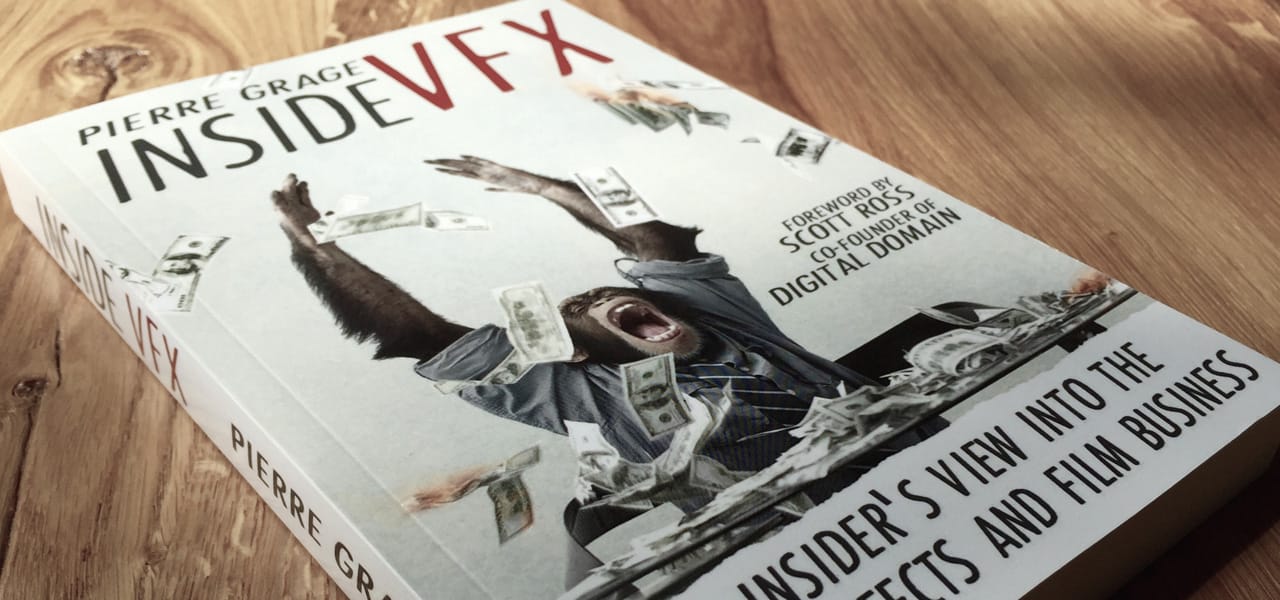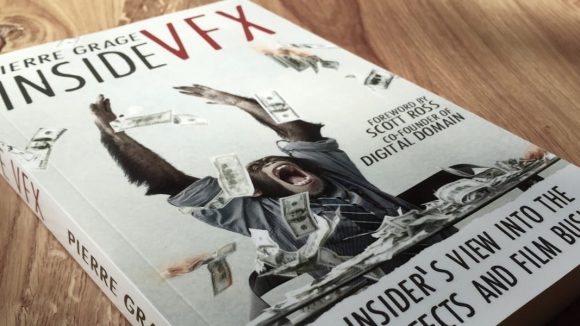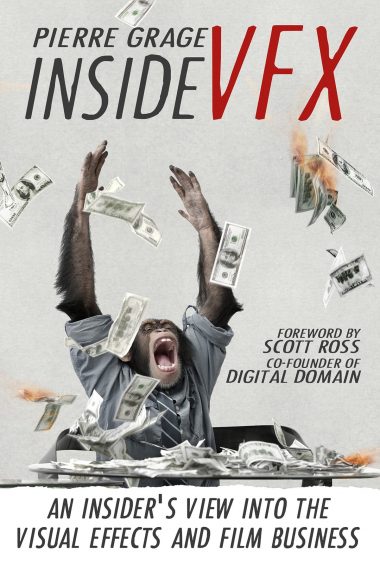

Review: ‘Inside VFX’ Goes Far Beyond The Usual VFX Industry Debate
“Unfortunately I had to find out many of these things the hard way. Now you won’t have to.”
That’s something author and visual effects practitioner Pierre Grage writes early in his self-published book, Inside VFX: An Insider’s View Into The Visual Effects And Film Business. It’s a stark warning to young visual effects artists and those looking to get into the industry—basically Grage says: ‘Don’t’.
Over the past few years (and maybe decades), the visual effects industry has had its fair share of tumultuous events. The most well-known of these are the bankruptcies of Digital Domain and Rhythm & Hues, but much has also been made of the impact of subsidies and the conditions that vfx artists face inside effects studios.
Grage, who has worked at Double Negative, Weta Digital, Animal Logic, and ILM, documents it all. The beginnings of the practical effects industry. The move into the digital realm. Failed companies. Box office successes and bombs. Education. The rise of Asia. And where vfx fits in all of this.
That means if you’re already in visual effects or if you’ve been following the doom and gloom side of the industry, then a lot of Inside VFX might actually read as old news.
But here’s where the book unleashes a big left turn. Amongst Grage’s discussion about the industry in general—taken from his own experiences and reports from others—is a surprising analysis of Hollywood business models and economics.
In fact, there’s so much of this material, including charts dealing with box office, definitions of key concepts like inflation and globalization, and details on Hollywood accounting, that the book might easily have been called ‘Inside VFX Economics’ instead.
There’s further discussion about the price collapse of technology, on production costs, and on just how large the vfx budget item is on most modern Hollywood films (hint: it’s a lot). This is interesting reading, not least of which because it prepares the reader for Grage’s opinions about why the vfx industry is partly in its current ‘chaotic’ state and made up of ‘dysfunctional’ corporations.
As you wade through the detail—the book runs to 340 pages—the commentary seems to become even more exasperated, almost in disbelief at some of the things Grage suggests happens in the industry, although his attack on vfx co-ordinators and separately on those in vfx who might have a form of Asperger syndrome does seem a little unfair and perhaps written based on bad experiences.
 Again, if you’re in the industry some of these stories are probably familiar and they may also be symptomatic of other creative industries (the presence of workplace sociopaths, as identified by Grage, comes to mind, here). It can all make for cathartic reading at times.
Again, if you’re in the industry some of these stories are probably familiar and they may also be symptomatic of other creative industries (the presence of workplace sociopaths, as identified by Grage, comes to mind, here). It can all make for cathartic reading at times.
There are of course many vfx artists who might not have had such terrible experiences. Indeed that’s one challenge with summarizing the industry in a book; it can change so rapidly. Just a few years ago there was bewilderment that Rhythm & Hues could win an Oscar for Life of Pi and then fall into bankruptcy. Today there does seem to be a higher degree of buoyancy about visual effects, at least in terms of large streams of work coming from comic book films, Star Wars, animated features, and television series.
Still, many problems clearly remain, and Inside VFX serves as a fascinating historical account of the modern effects playing field. The idea is that you need to understand what’s happened already in order to understand what is happening and will happen.
The book is well laid out and easy to follow and the economics sections referred to above are not hard to grasp. There are occasional grand statements that seem to be only supported with hyperlinks to news articles or nothing at all, and there are also a few sloppy factual and typographical errors that can sometimes be distracting.
For a self-published book, Inside VFX is an important read, especially if you are considering a move into vfx or animation. It can be a somber, if not fascinating, read and you get the feeling Grage launched headfirst into an industry that he thought he would love but that only left him disappointed.
By the end, however, it’s clear the author has a deep-rooted affection for cinema and even vfx still, and that there is hope that things can change. Perhaps if more people take note of his observations, things will.
Inside VFX is available to buy at Amazon in either print paperback or Kindle e-book
form.
